 W
WThe themes or thémata were the main military/administrative divisions of the middle Byzantine Empire. They were established in the mid-7th century in the aftermath of the Slavic invasion of the Balkans and Muslim conquests of parts of Byzantine territory, and replaced the earlier provincial system established by Diocletian and Constantine the Great. In their origin, the first themes were created from the areas of encampment of the field armies of the East Roman army, and their names corresponded to the military units that had existed in those areas. The theme system reached its apogee in the 9th and 10th centuries, as older themes were split up and the conquest of territory resulted in the creation of new ones. The original theme system underwent significant changes in the 11th and 12th centuries, but the term remained in use as a provincial and financial circumscription until the very end of the Empire.
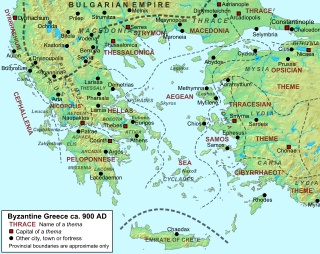 W
WThe Theme of the Aegean Sea was a Byzantine province in the northern Aegean Sea, established in the mid-9th century. As one of the Byzantine Empire's three dedicated naval themes, it served chiefly to provide ships and troops for the Byzantine navy, but also served as a civil administrative circumscription.
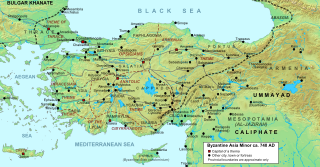 W
WThe Anatolic Theme, more properly known as the Theme of the Anatolics, was a Byzantine theme in central Asia Minor. From its establishment, it was the largest and senior-most of the themes, and its military governors (stratēgoi) were powerful individuals, several of them rising to the imperial throne or launching failed rebellions to capture it. The theme and its army played an important role in the Arab–Byzantine wars of the 7th–10th centuries, after which it enjoyed a period of relative peace that lasted until its conquest by the Seljuk Turks in the late 1070s.
 W
WThe Armeniac Theme, more properly the Theme of the Armeniacs was a Byzantine theme located in northeastern Asia Minor.
 W
WBoleron was the name of a region and a Byzantine province in southwestern Thrace during the Middle Ages.
 W
WThe Bucellarian Theme, more properly known as the Theme of the Bucellarians was a Byzantine theme in northern Asia Minor. It was created around the middle of the 8th century, comprising most of the ancient region of Paphlagonia and parts of Galatia and Phrygia.
 W
WThe Theme of Bulgaria was a province of the Byzantine Empire established by Emperor Basil II after the conquest of Bulgaria in 1018. Its capital was Skopje and it was governed by a strategos. The local Slavic inhabitants were called by the Byzantines Bulgarians. Nevertheless the Bulgarians kept their nationality, which reached particular strength after the Second Bulgarian Empire was formed in the 12th century. The period ended with the Uprising of Asen and Peter.
 W
WThe island of Crete came under the rule of the Byzantine Empire in two periods: the first extends from the late Roman period to the conquest of the island by Andalusian exiles in the late 820s, and the second from the island's reconquest in 961 to its capture by the competing forces of Genoa and Venice in 1205.
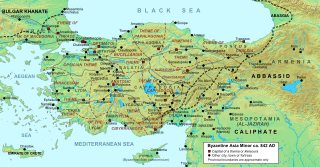 W
WThe Theme of Cappadocia was a Byzantine theme encompassing the southern portion of the namesake region from the early 9th to the late 11th centuries.
 W
WThe Theme of Cephallenia or Cephalonia was a Byzantine theme located in western Greece, comprising the Ionian Islands, and extant from the 8th century until partially conquered by the Kingdom of Sicily in 1185.
 W
WChaldia was a historical region located in the mountainous interior of the eastern Black Sea, northeast Anatolia. Its name was derived from a people called the Chaldoi that inhabited the region in antiquity. Chaldia was used throughout the Byzantine period and was established as a formal theme, known as the Theme of Chaldia, by 840. During the Late Middle Ages, it formed the core of the Empire of Trebizond until its fall to the Ottoman Empire in 1461.
 W
WCharsianon was the name of a Byzantine fortress and the corresponding theme in the region of Cappadocia in central Anatolia.
 W
WThe Theme of Cherson, originally and formally called the Klimata was a Byzantine theme located in the southern Crimea, headquartered at Cherson.
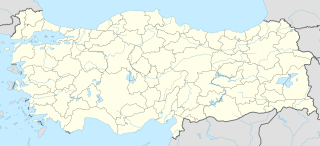 W
WHozat is a small city and its surrounding district in Tunceli Province of Turkey. It has a population of 4,714. Seyfi Geyik from the Republican People's Party (CHP) was elected mayor in the local elections in March 2019. Kaymakam is Cuma Emeç.
 W
WThe Cibyrrhaeot Theme, more properly the Theme of the Cibyrrhaeots, was a Byzantine theme encompassing the southern coast of Asia Minor from the early 8th to the late 12th centuries. As the Byzantine Empire's first and most important naval theme, it served chiefly to provide ships and troops for the Byzantine navy.
 W
WThe Theme of Dalmatia was a Byzantine theme on the eastern coast of the Adriatic Sea in Southeastern Europe, headquartered at Jadera.
 W
WTercan is a town and district of Erzincan Province in the Eastern Anatolia region of Turkey. The district covers an area of 1,592 km2 (615 sq mi) and its total population is 20,072 of which 6,646 live in the town of Tercan.
 W
WThe Theme of Dyrrhachium or Dyrrhachion was a Byzantine military-civilian province (theme) located in modern Albania, covering the Adriatic coast of the country. It was established in the early 9th century and named after its capital, Dyrrhachium.
 W
WThe Theme of Hellas was a Byzantine military-civilian province located in southern Greece. The theme encompassed parts of Central Greece, Thessaly and, until c. 800, the Peloponnese peninsula. It was established in the late 7th century, and survived until the late 11th/12th century, when it was broken up into smaller districts.
 W
WThe theme of Iberia was an administrative and military unit – theme – within the Byzantine Empire carved by the Byzantine Emperors out of several Georgian lands in the 11th century. It was formed as a result of Emperor Basil II’s annexation of a portion of the Bagrationi Dynasty domains (1000–1021) and later aggrandized at the expense of several Armenian kingdoms acquired by the Byzantines in a piecemeal fashion in the course of the 11th century. The population of the theme—at its largest extent—was multiethnic with a possible Georgian majority, including a sizable Armenian community of Chalcedonic rite to which Byzantines sometimes expanded, as a denominational name, the ethnonym "Iberian", a Graeco-Roman designation of Georgians. The theme ceased to exist in 1074 as a result of the Seljuk invasions.
 W
WThe Theme of Koloneia was a small military-civilian province of the Byzantine Empire located in northern Cappadocia and the southern Pontus, in modern Turkey. It was founded sometime in the mid-9th century and survived until it was conquered by the Seljuk Turks soon after the Battle of Manzikert in 1071.
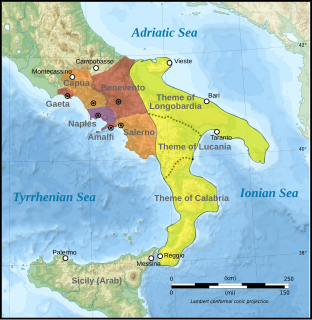 W
WLongobardia was a Byzantine term for the territories controlled by the Lombards in the Italian Peninsula. In the ninth and tenth centuries, it was also the name of a Byzantine military-civilian province known as the Theme of Longobardia located in southeastern Italy.
 W
WLucania was a Byzantine province (theme) in southern Italy that was probably established c. 968, under Emperor Nikephoros II Phokas.
 W
WLykandos or Lycandus was the name of a Byzantine fortress and military-civilian province, known as the Theme of Lykandos, in the 10th–11th centuries.
 W
WThe Theme of Macedonia was a military-civilian province (theme) of the Byzantine Empire established between the late 8th century and the early 9th century. Byzantine Macedonia had no relation to the Ancient Macedonia but lay to the east in the modern region of Thrace. Its capital was Adrianople.
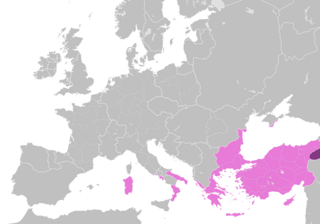 W
WMesopotamia was the name of a Byzantine theme located in what is today eastern Turkey. It should not be confused with the region of Mesopotamia or with the older Roman and early Byzantine province of Mesopotamia. The Byzantine theme was located between the rivers Arsanias and Çimisgezek.
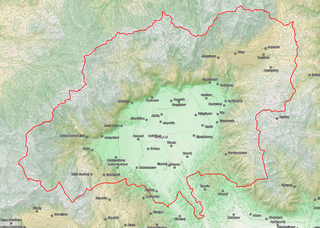 W
WAlmopia, or Enotia, also known in the Middle Ages as Moglena, is a municipality and a former province (επαρχία) of the Pella regional unit in Macedonia, Greece. The seat of the municipality is the town Aridaia. The municipality has an area of 985.817 km2.
 W
WThe Theme of Nicopolis or Nikopolis was the name of a Byzantine theme located in northwestern Greece, encompassing Aetolia-Acarnania and southern Epirus. It was established in the second half of the 9th century, probably after 886, and survived until the dissolution of the Byzantine Empire by the Fourth Crusade in 1204.
 W
WThe Opsician Theme or simply Opsikion was a Byzantine theme located in northwestern Asia Minor. Created from the imperial retinue army, the Opsikion was the largest and most prestigious of the early themes, being located closest to Constantinople. Involved in several revolts in the 8th century, it was split in three after ca. 750, and lost its former pre-eminence. It survived as a middle-tier theme until after the Fourth Crusade.
 W
WThe Optimatoi were initially formed as an elite Byzantine military unit. In the mid-8th century, however, they were downgraded to a supply and logistics corps and assigned a province (thema) in north-western Asia Minor, which was named after them. As an administrative unit, the Theme of the Optimatoi survived until the Ottoman conquest in the first decades of the 14th century.
 W
WThe Theme of Paphlagonia was a military-civilian province of the Byzantine Empire in the namesake region along the northern coast of Anatolia, in modern Turkey.
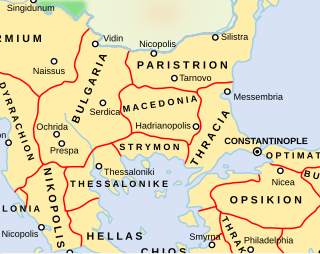 W
WParistrion, or Paradounabon/Paradounabis, which is preferred in official documents, was a Byzantine province covering the southern bank of the Lower Danube in the 11th and 12th centuries.
 W
WThe Theme of the Peloponnese was a Byzantine military-civilian province encompassing the Peloponnese peninsula in southern Greece. It was established in c. 800, and its capital was Corinth.
 W
WBingöl is a city in Eastern Turkey. It is surrounded by mountains and numerous glacier lakes, hence the name. Lately, the town has become a popular tourist destination. According to 2017 estimates, it has a population of over 111,000.
 W
WThe Theme of Samos was a Byzantine military-civilian province, located in the eastern Aegean Sea, established in the late 9th century. As one of the Byzantine Empire's three dedicated naval themes, it served chiefly to provide ships and troops for the Byzantine navy.
 W
WThe Theme of Sebasteia was a military-civilian province of the Byzantine Empire located in northeastern Cappadocia and Armenia Minor, in modern Turkey. It was established as a theme in 911 and endured until its fall to the Seljuk Turks in the aftermath of the Battle of Manzikert in 1071.
 W
WThe Theme of Seleucia was a Byzantine theme in the southern coast of Asia Minor, headquartered at Seleucia.
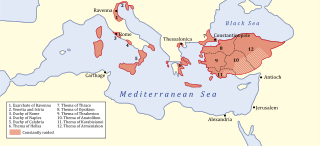 W
WThe Theme of Sicily was a Byzantine province (theme) existing from the late 7th to the 10th century, encompassing the island of Sicily and the region of Calabria in the Italian mainland. Following the Muslim conquest of Sicily, from 902 the theme was limited to Calabria, but retained its original name until the middle of the 10th century.
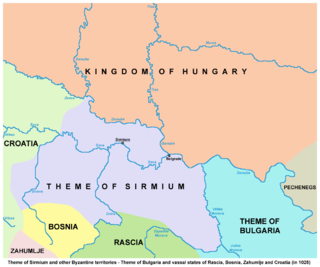 W
WThe Theme of Sirmium was a Byzantine administrative unit (theme), which existed in present-day Serbia, Croatia and Bosnia and Herzegovina in the 11th century. Its capital was Sirmium.
 W
WThe Theme of Strymon was a Byzantine military-civilian province (theme) located in modern Greek Macedonia, with the city of Serres as its capital. Founded probably by the mid-to-late 9th century, its history as an administrative history was chequered, being variously split up and/or united with neighbouring themes.
 W
WThe Theme of Cyprus was a Byzantine military-civilian province, located in the island of Cyprus, established in the 960s after the reconquest of Cyprus by the Byzantine navy. Prior to this the island had been a Byzantine-Arab condominium for three centuries, except occasional short periods where it was occupied by either power. A rebellion by governor Theophilos Erotikos in 1042, and another in 1092 by Rhapsomates, failed as they were quickly subdued by imperial forces. At the end of the 12th century there were again separatist tendencies in Cyprus: Isaac Komnenos of Cyprus proclaimed himself as "basileus" (emperor) in 1185. Cyprus remained under his command until its conquest in 1191 during the Third Crusade by Richard I of England, who sold it to the Knights Templars.
 W
WThe Theme of Thessalonica was a military-civilian province of the Byzantine Empire located in the southern Balkans, comprising varying parts of Central and Western Macedonia and centred on Thessalonica, the Empire's second-most important city.
 W
WThe Theme of Thrace was a province of the Byzantine Empire located in the south-eastern Balkans, comprising varying parts of the eponymous geographic region during its history.
 W
WThe Thracesian Theme, more properly known as the Theme of the Thracesians, was a Byzantine theme in western Asia Minor. Created either in the mid-7th or the early 8th century as the settlement of the former Army of Thrace, after which it was named, it was one of the larger and more important themes of the Empire throughout its existence based on its proximity to Constantinople. The Thracesian Theme was one of the longest-lived themes, surviving until the region was conquered by the Turks in the early 14th century.
 W
WÇermik is a town and district of Diyarbakır Province of Turkey. The population is 50,812. The mayor is Şehmus Karamehmetoğlu from the Justice and Development Party (AKP), and the current Kaymakam is Nazlı Demir.